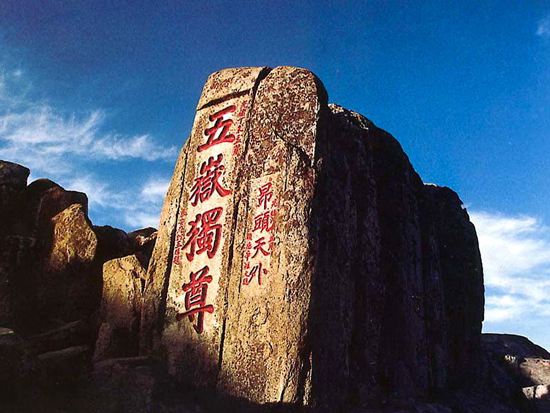Mount Tai


Mount Tai is located in the middle of Shandong province spanning two cities (Tai'an city and Jinan city) with a total area of 426 square kilometers. Mount Tai was called Daizong (the principal mountain of China) in ancient times and then was renamed as Mount Tai in Spring and Autumn Dynasty going by the name of Dongyue (the Sacred Mountain of East China) that ranks No 1 among the five most important mountains in China. In 1987, Mount Tai was listed as Cultural and Natural World Heritage site and honored as "World Geopark" in 2006. In China, Mount Tai is among the first group of "National Parks of China", the state 5A-class tourist attraction, the top 10 best National Civilized Spot in China.
Mount Tai is well known for its spectacular, grandness, elevation, width, steadiness and massiveness. The typical character of natural scenery of Mount Tai is imposing, steep, surprising, serene, secluded, profound, and spacious. The picturesque Mount Tai has various sceneries like cragged cliff, deep canyon and gorge, grotesque peak and strange rocks, luxuriant vegetation and the flowing springs and twittering birds…. The mountain also has marvelous unique wonders: the rising sun at dawn, the jade plate of sea of clouds, the aura appearing around Bixia Temple, rosy clouds at sunset etc.

Since ancient times, Mount Tai has been recognized as holy and sacred Mountain and held the accolade of "Most Revered of the Five Sacred Mountains". Furthermore, Mount Tai symbolizes peaceful life and unified country. For thousands of years, more than a dozen emperors paid their homage to the mountain. Vast quantities of poetry and stone inscriptions were left by emperors, poets and scholars of every era. Confucians and Taoists coexist harmoniously on the mountain. And civilians worshiped the mountain with sincere esteem. In other words, Mount Tai has become the symbol of Chinese spirit.
There are also peculiar geological structures as three grand fracture layers, Komatiite rocks and Zuixin Stone (a swirl shaped allgovite rocks); masterpieces of ancient constructions as Dai Temple, Nantian Gate, Bi Xia temple; precious stone inscriptions of past dynasties as Qin dynasty stone inscriptions, inscriptions rocks of the Diamond Sutra, cliffs with inscriptions of Tang dynasty; ancient trees like pine trees of Qin Dynasty, cypress of Han Dynasty (about 1800 years ago), locust tree of Tang Dynasty (about 1200 years ago).
All the above syncretize and integrate nature scenery and human culture. 7000 stone stairs which run for 9 kilometers long through the mountain from the foot to the zenith looks like the axes of Mount Tai integrating earth, heaven and humans as a whole and thus is a road for human beings to heaven. Because of the unique integration of human civilization and natural landscape, Mount Tai is respected by billions of Chinese people and has become renowned all over the world as well as a treasurable heritage of panhuman.
Website: http://www.mount-tai.com.cn/
MOST POPULAR
- 1 China to continue opening up its mega-market to world: premier
- 2 Policies concerning expats, foreign enterprises in November 2025
- 3 China to enhance convenience for inbound tourism: minister
- 4 Departure tax refund applications surge 285% as inbound tourism rebounds
- 5 China's foreign trade up 3.6% in first 11 months of 2025







